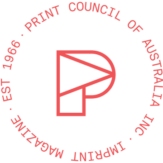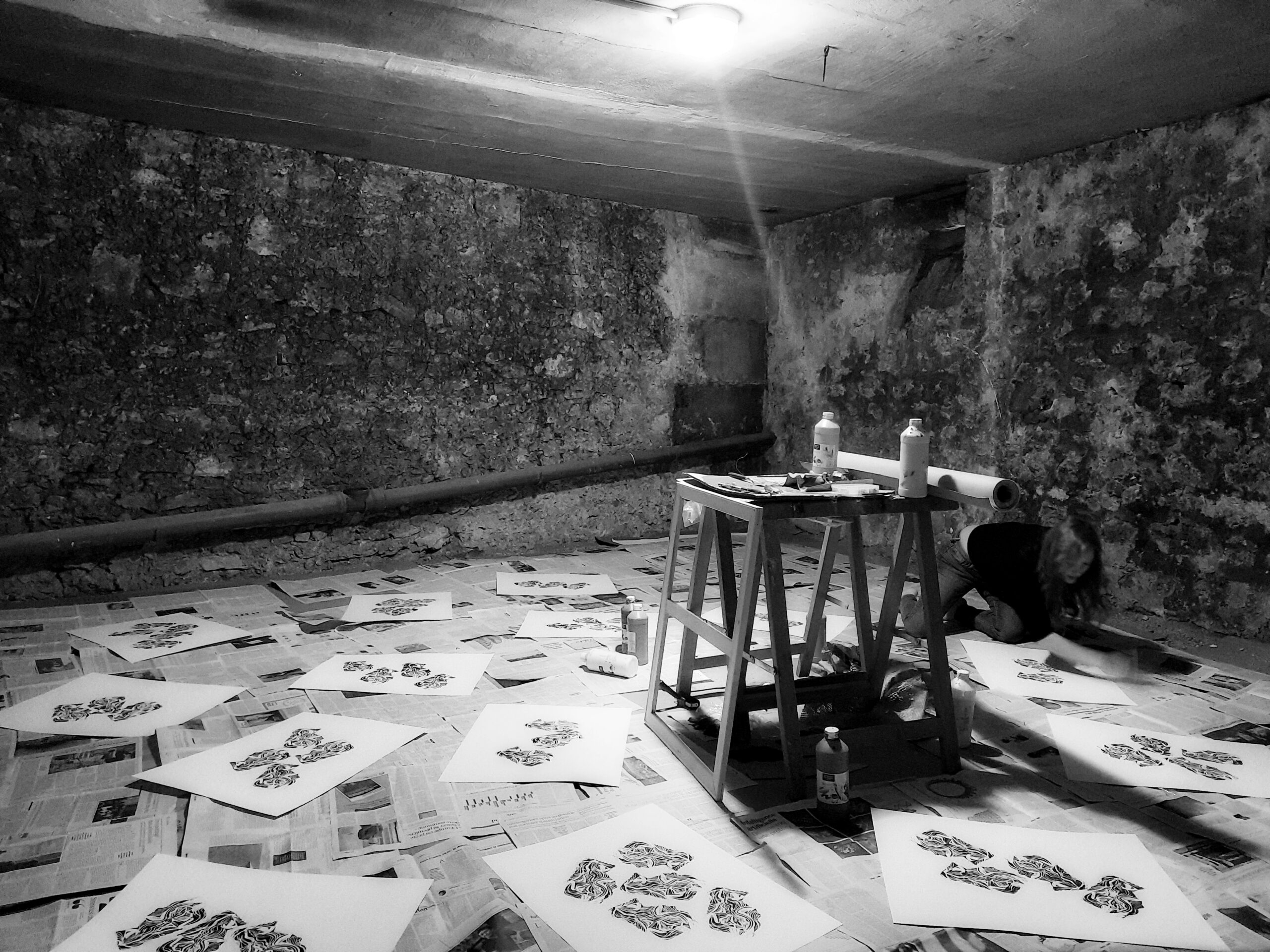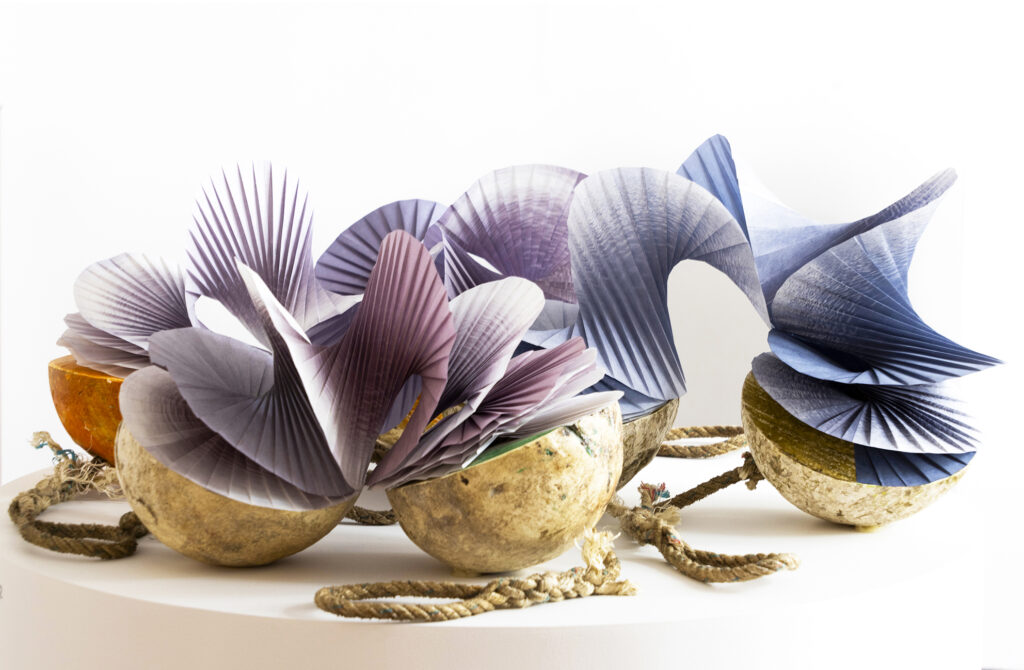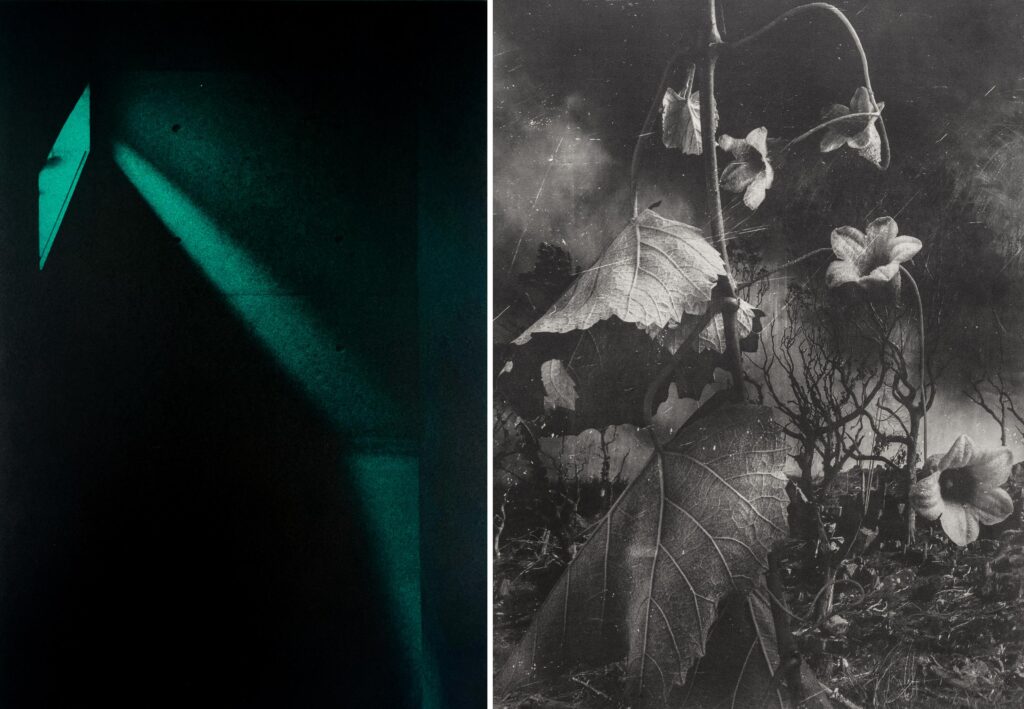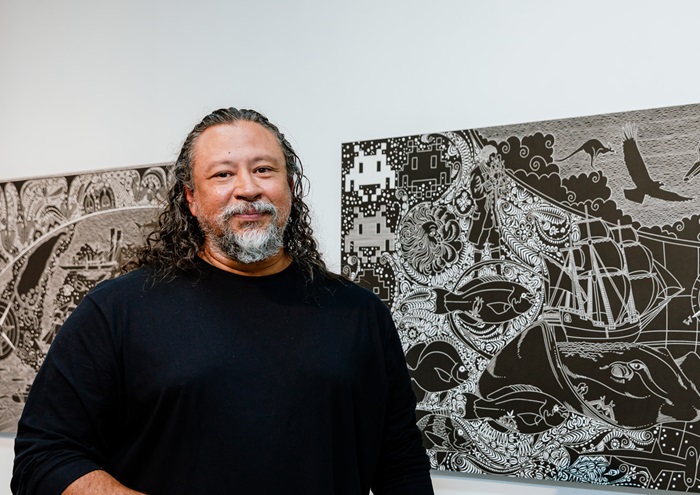PROTEAN at the PCA Gallery
Artists showing in the PCA Gallery’s new exhibition Protean discuss the intricacies of their work.
26 June, 2023
In Exhibitions,
Printmaking, Q&A
TRANSFORMATION is latent within all things. It is an inevitability that is both obvious and elusive at once. The concept has, in some regards, developed its own narrow mythology, often seen as a linear process with set parameters – a beginning, middle and end – but that experiential and ideological perception belies a deep and ubiquitous ongoing evolution that touches every aspect of the universe.
In Greek mythology, Proteus is a shape-shifting river god often referred to as the “elusive sea changer” or alternatively the Old Man of the Sea. From this comes the adjective protean, meaning “capable of assuming many forms”.
In this exhibit, artists present work that investigate personal, provincial or universal aspects of transformative processes or experience. Their artistic practice involves exploration and critical examination of technique, identity and theme. The work presented embodies openness in methodology and is driven by discovery that speaks to continuing and contextual evolution.
—
Protean is at the Print Council of Australia Gallery
Studio 2 Guild, 152 Sturt St, Southbank VIC 3006
Exhibition Dates: 11-28 July, 2023
Opening Reception: Thursday 13th July, 5-7pm
Gallery Opening Hours: Tues-Fri 10am-4pm.
printcouncil.org.au
—
Join the PCA and become a member. You’ll get the fine-art quarterly print magazine Imprint, free promotion of your exhibitions, discounts on art materials and a range of other exclusive benefits.
Main image, top:
Protean curator Athena Lim Malamas in her studio. All images © the artists.
T O N Y A M E N E I R O
Tony Ameneiro, The Night Lily Head (TVC15), 2010, linocut on kozo paper, 120 x 85 cm. (TVC 15 refers to the David Bowie song of same name).
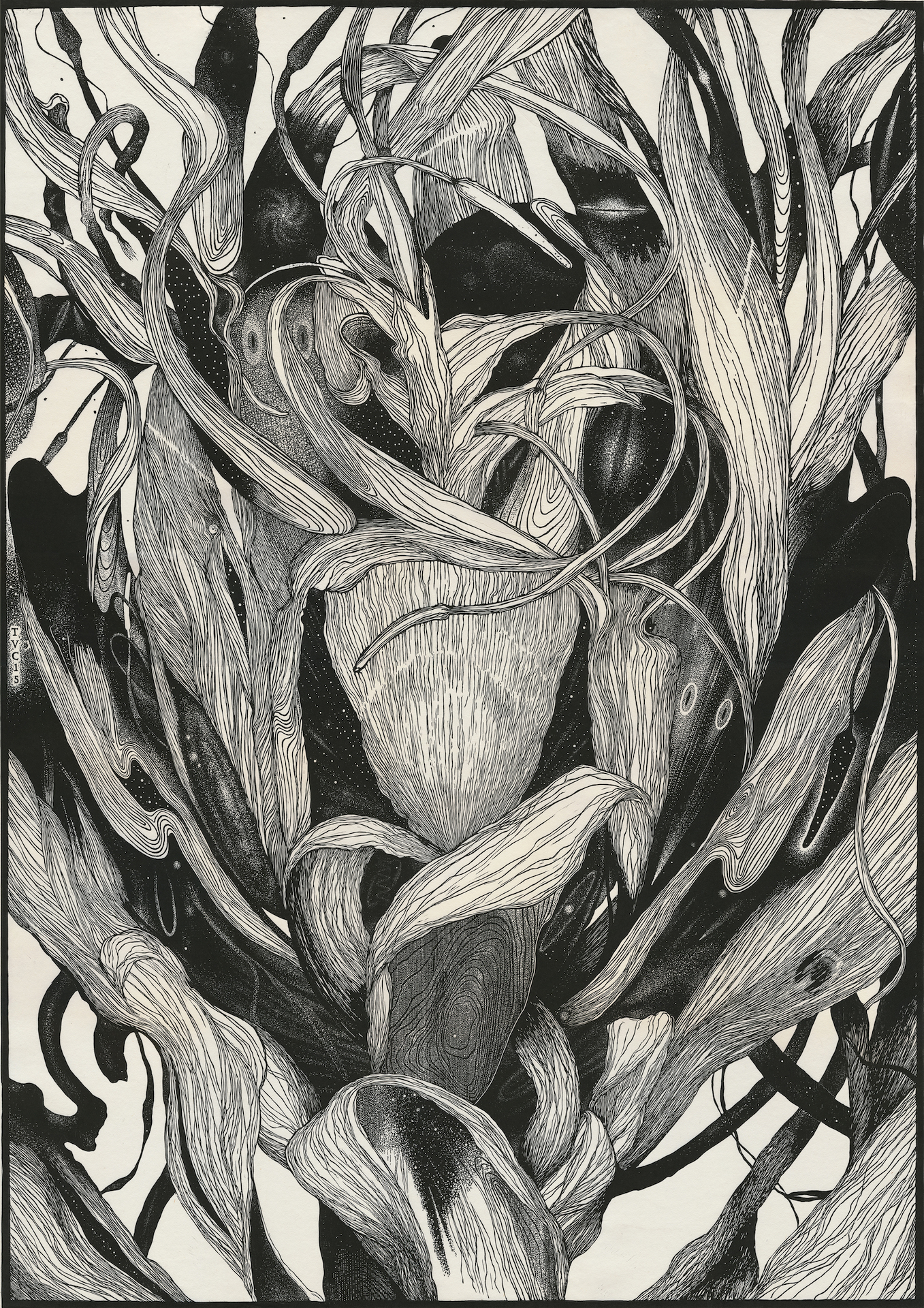
Tony Ameneiro, Lily Head, 2008, artist’s proof, mezzotint with colour à la poupée, 20 x 15 cm
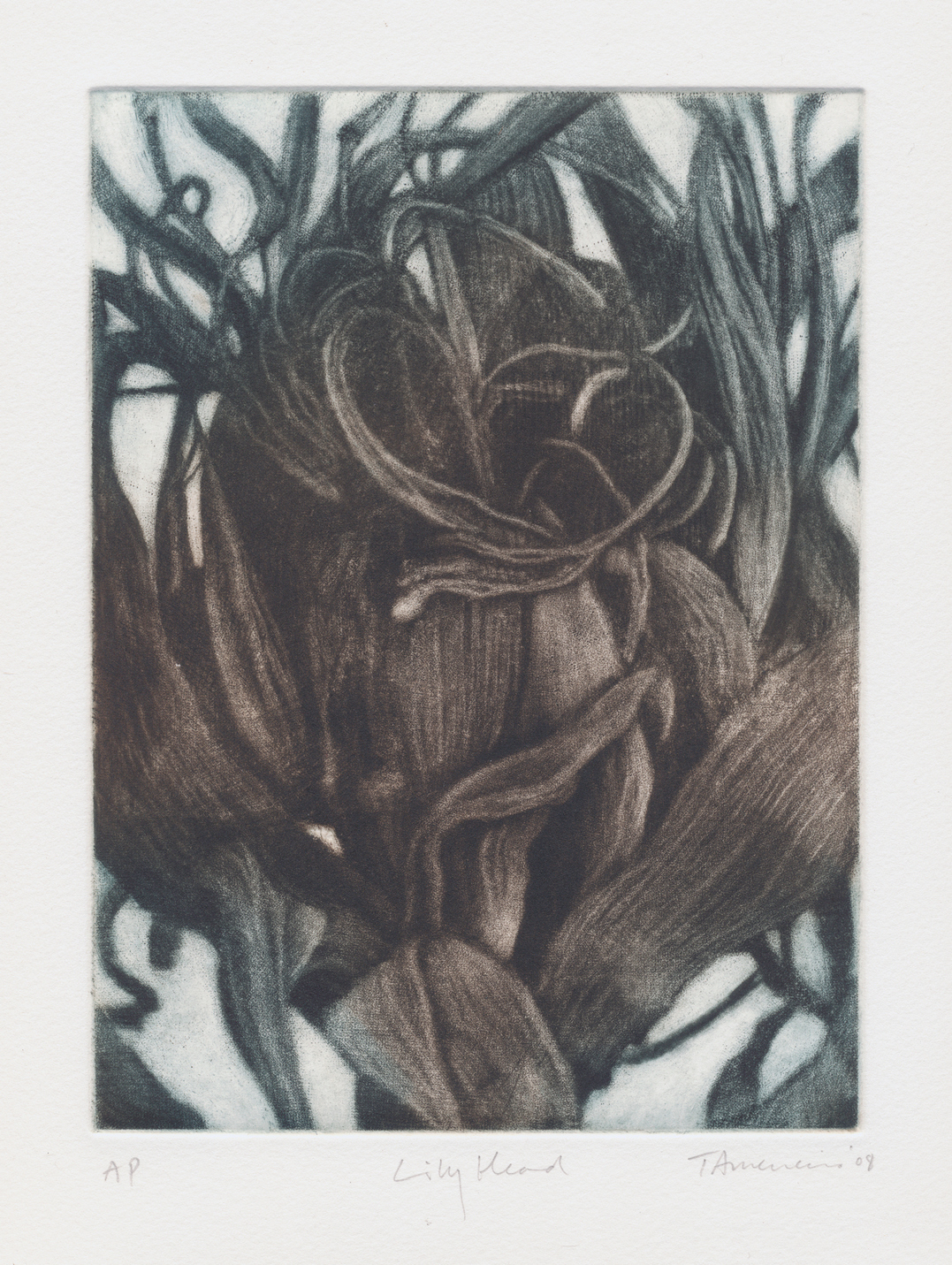
Tony Ameneiro, Night Lily Head Over Lily Head, 2013, artist’s proof, colour lithograph from stone, 70 x 46 cm
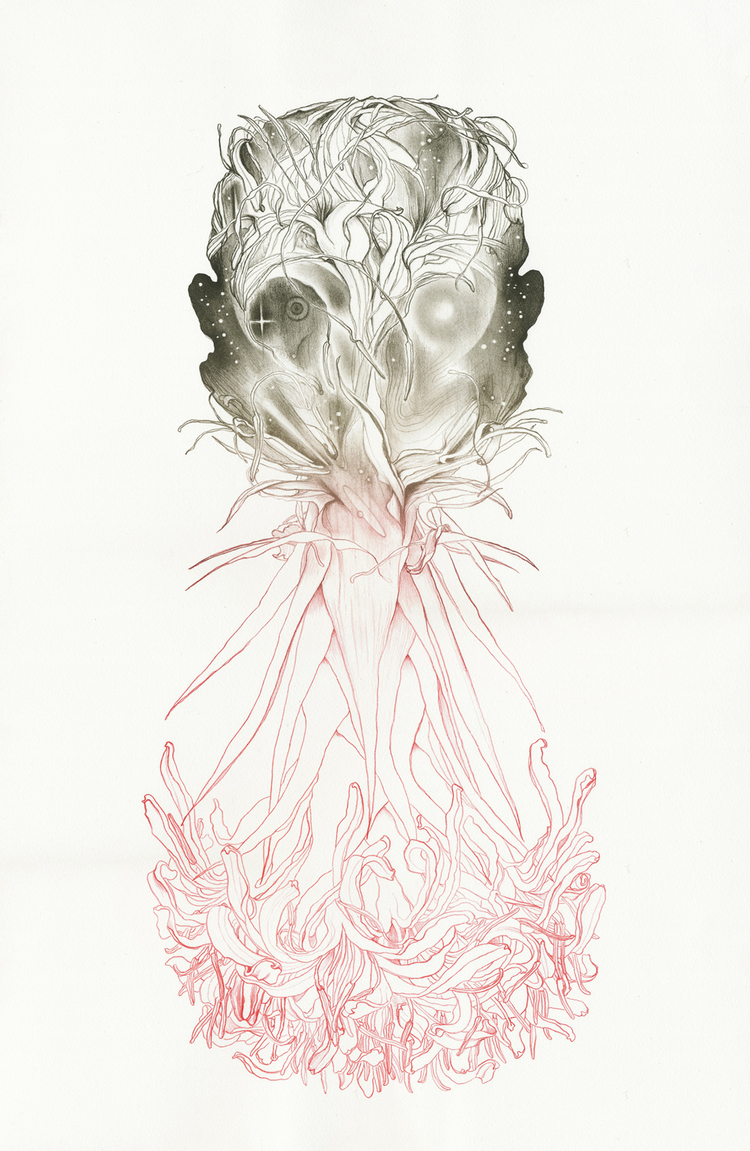
The works here are from a period where I was taking one form and transitioning it into another, flower into head into night sky or vice versa. More broadly my approach to my work is to move from one theme to the next allowing the one to influence and transform into the next. Parts or ideas of work from ten years ago might crop up in new work. Moving from landscape to botanical themes to concerns about the human condition I don’t really adhere to one aspect or theme. Most of my work is about transformation in one sense or another; transforming drawings into prints or prints into drawings. Three works here for the Protean show are from the Night Lily Head series.
As with much of my work they can be seen as a transition, working from one theme to the next. Here aspects of the Night Skull series blend with and pre-empt the Flowering Head series, which followed these. The large linocut Night Lily Head TVC15 was a work which took the notion of a head which could be seen as part flowering head of a gymea lily, part human head along with celestial scenes. Somewhere amongst this is the input of the song TVC15 by David Bowie, which I listened to constantly while cutting the block over several months. The surreal nature of the song winding its way into the work. The smaller Lily Head mezzotint was a lead up work to the larger linocut. The colour lithograph Night Lily Head Over Lily Head places the Night Lily Head over a reference to the gymea lily head by the naturalist Ferdinand Bauer (1760–1826). Again this “double-header” work is a lead up to something which became a theme of its own in the later Head Over Head series of 2016.
P A U L C O M P T O N
Paul Compton, Hadith, linocut, 58 x 88 cm
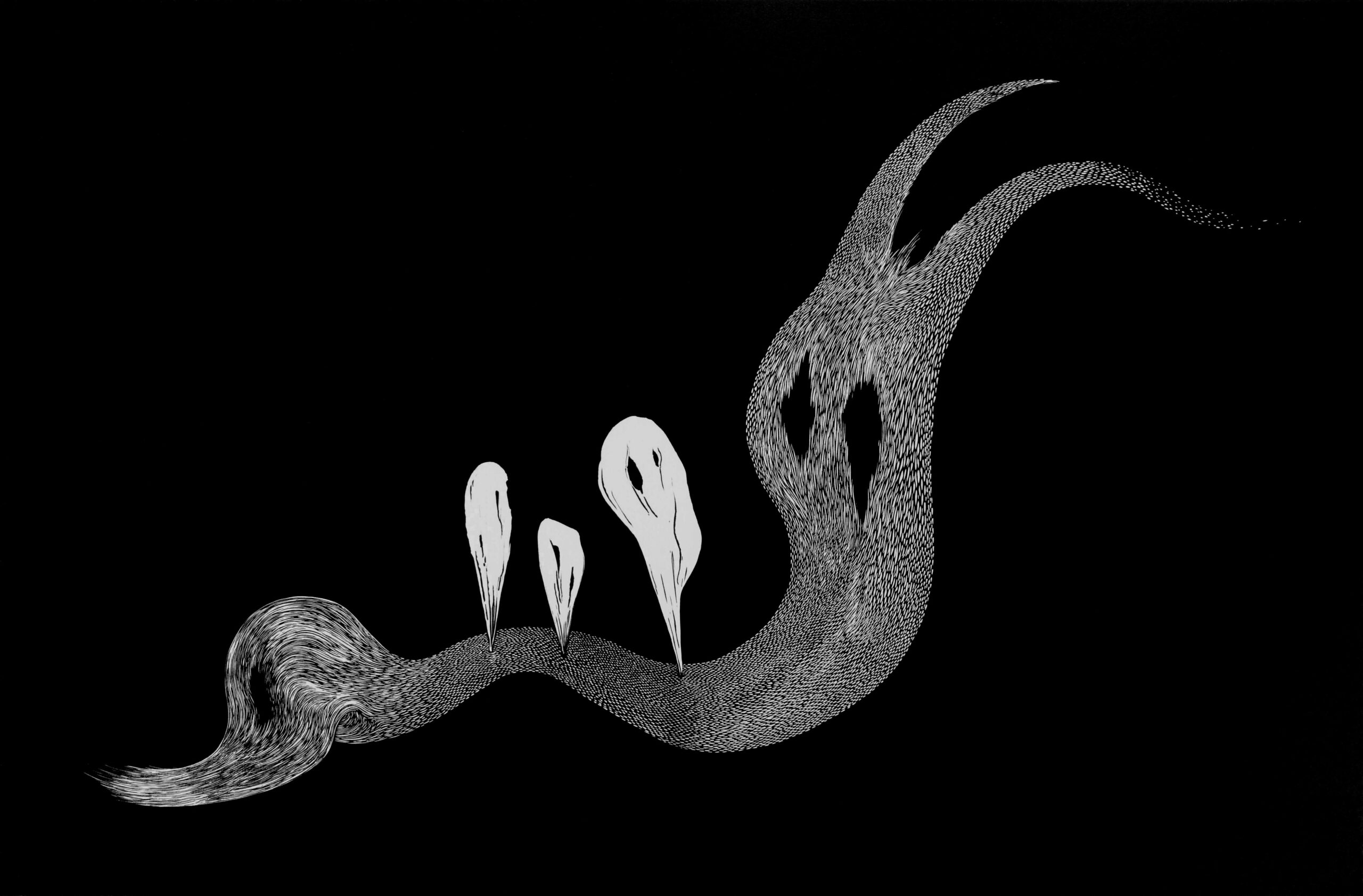
Transformation is really at the heart of my relief prints. The forms and beings depicted are always in a state of flux, set within void-like, subliminal spaces. Forms drip, swirl, shrink, expand and shatter. Usually, the image depicts the moment when one form becomes two, a form falls apart or realises its innate connection to another. In some ways they resemble Rorschach ink-blot tests in their subjectivity. My latest prints are inspired by the phenomenon of the primal scream or howl: the body making a startling and unexpected sound, expressing an emotion or knowledge that has been repressed and unacknowledged for a long time. This guttural sound is the expression of self-realisation and the beginning of a transformation. For me, the self is in a perpetual state of transformation and realisation. This is a good thing. The more we realise the interconnectedness of each other, the animal world, the mind and our surroundings, the more we can progress.
L A N A D E J A G E R
Lana de Jager in the studio.
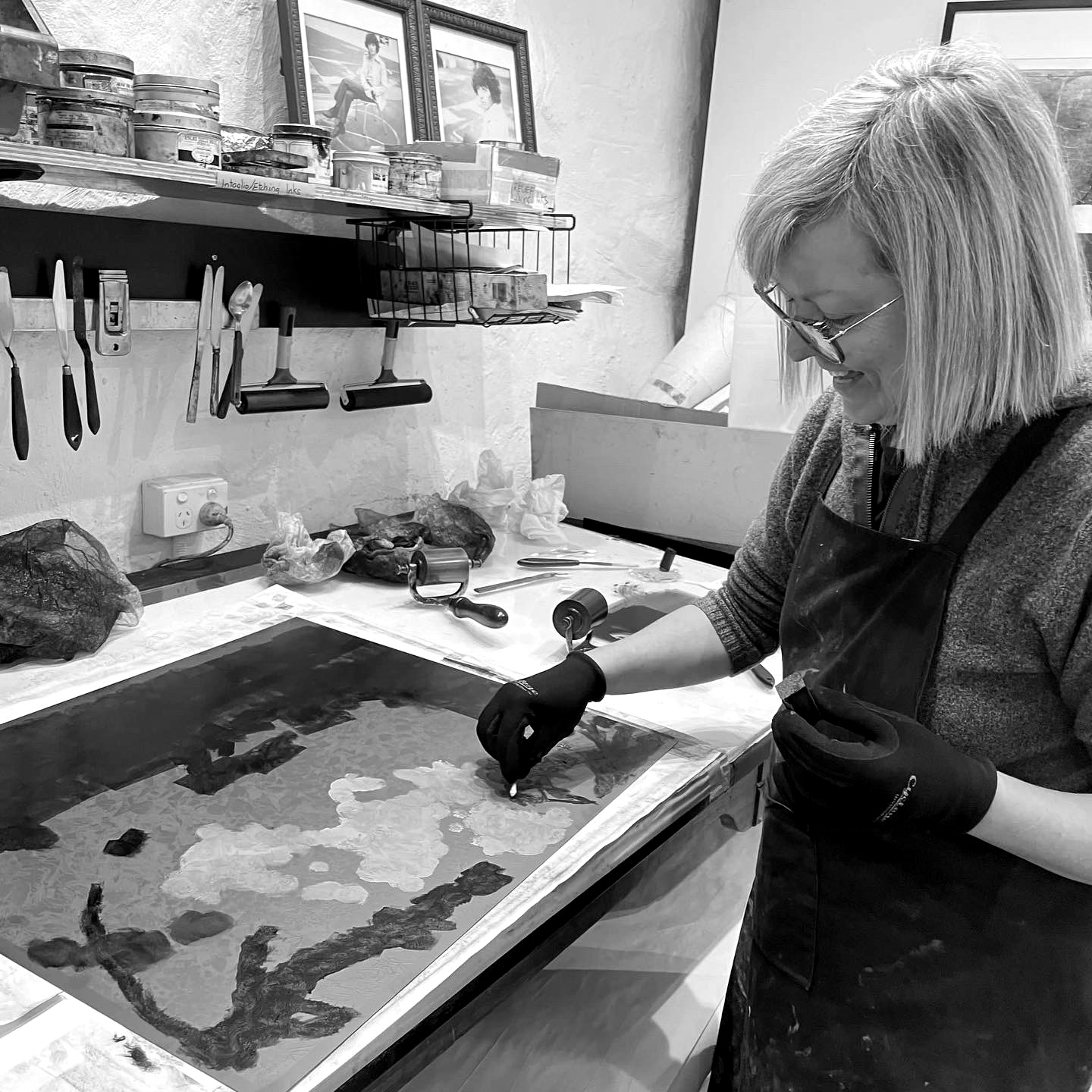
Lana de Jager, Hitching A Ride With The Tough Guy, 2019, solarplate etching, 75 x 57 cm
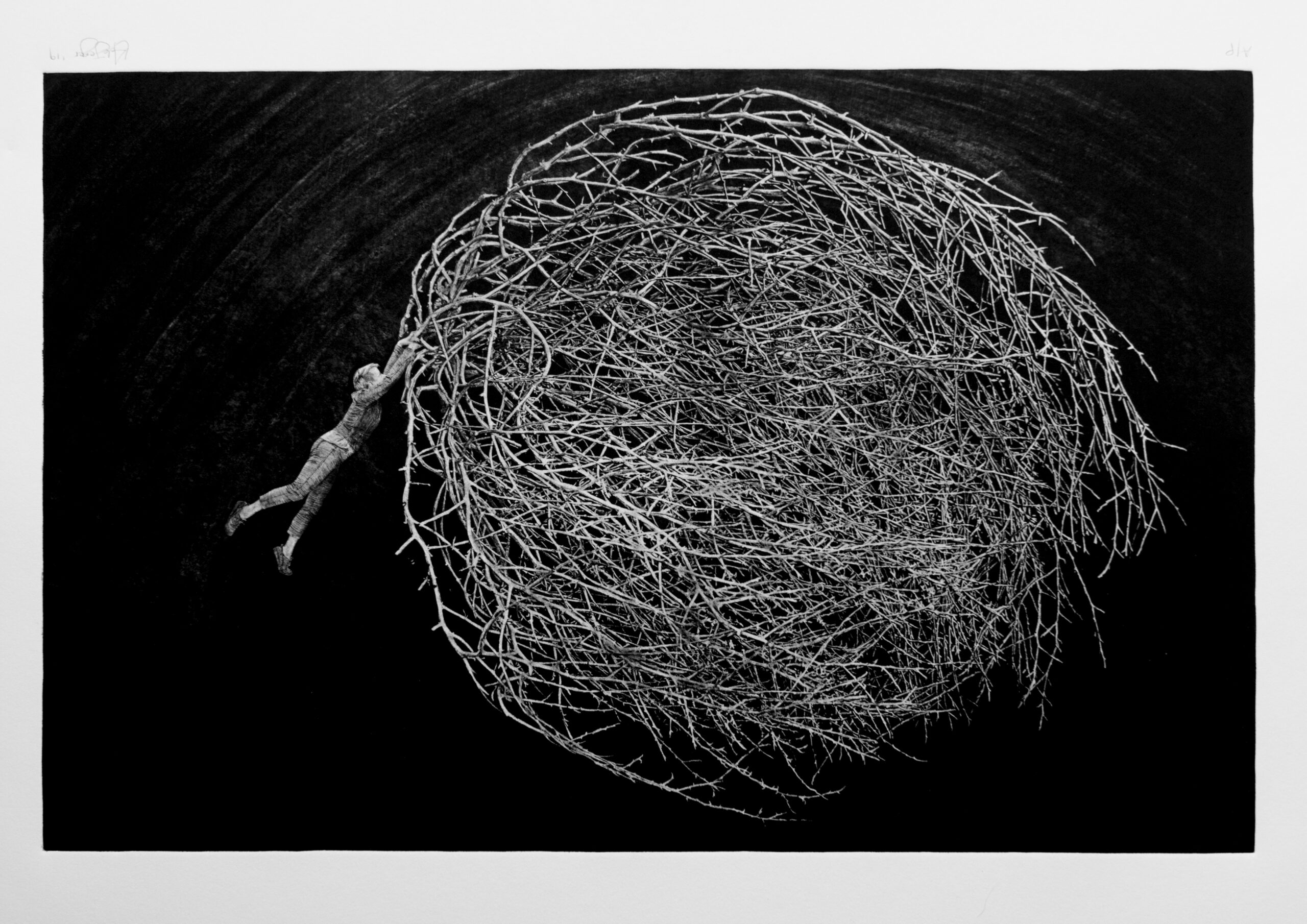
Lana de Jager, Waiting for Wisdom, 2019, solarplate etching, 75 x 57 cm
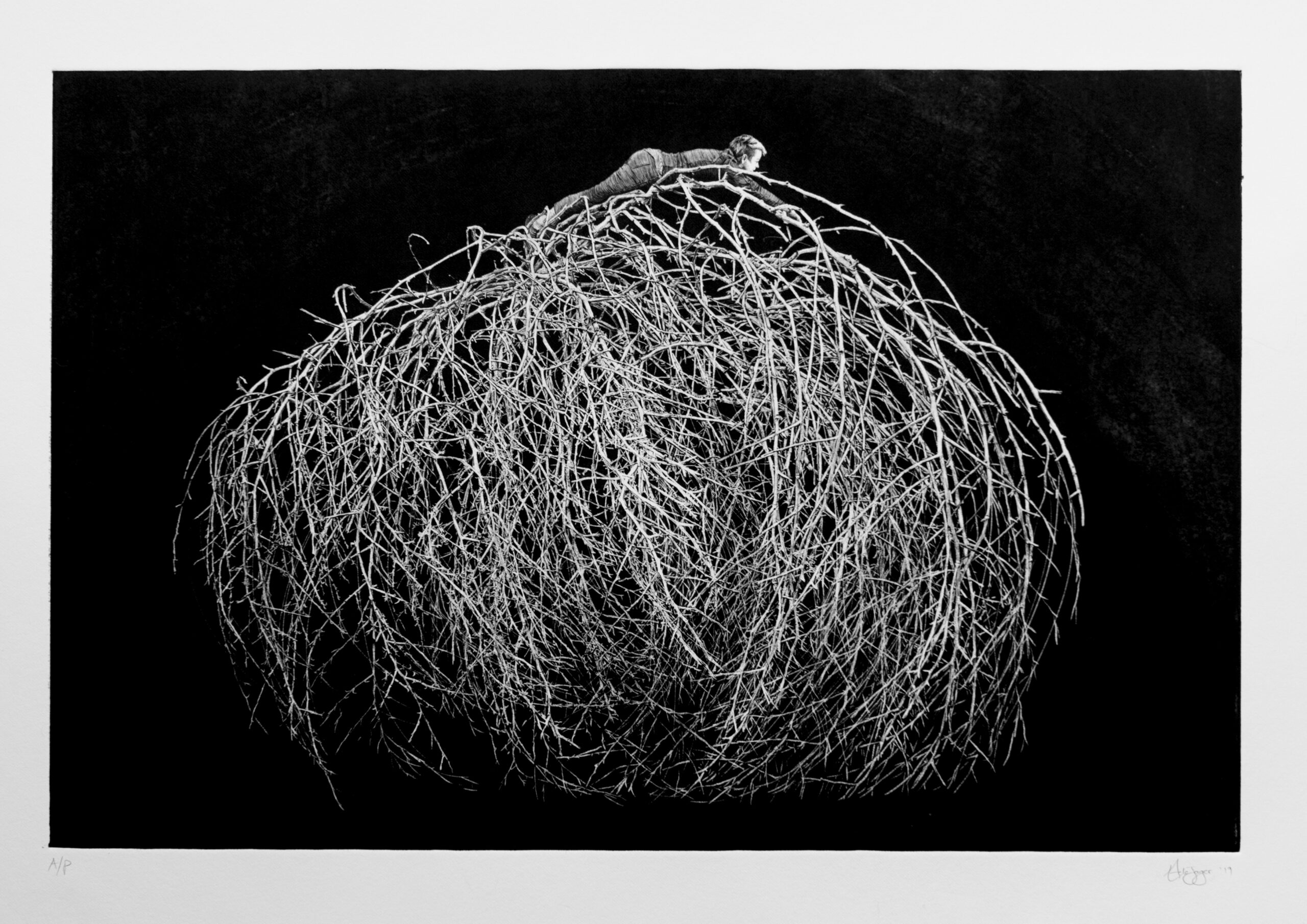
As an artist, how would you define your relationship with transformation? Are you often looking for new frontiers or perhaps are more rooted and push for evolution within a smaller niche or cocoon? Do you seek transformation within comfort or as a result of risk? Both have benefits.
Such a great question! I’m aware that we all carry both fear and excitement for change in unequal amounts. Sometimes I have a high tolerance for risk and I crave new frontiers, but I’m also a control freak, often resulting in those dichotomous needs having a lovely fight in my head. Transformation, either internally or in my relationships, is phenomenally rewarding and I seek it whenever I am stuck.
How do you feel your work pushes boundaries, personally or within your field?
On a purely practical level I gravitate towards new materials and new ways of printmaking, particularly the development of more economical and less toxic materials. I also enjoy learning technologies that bridge the gap between digital and analogue techniques. I’m not sure that this is boundary pushing, however – millions of artists around the world work in this liminal space. Maybe boundary pushing happens more within the content of my work: I try to tell stories visually that would’ve been impossible to tell with my limited knowledge of words. My work investigates loss and grief, mental health, cultural pressures, issues that come up through our interaction with the media and all the terrible news we are facing with regards to human impacts on the earth. By their very essence these themes try to start transformational conversations.
Waiting for Wisdom body of work: The three tumbleweed works are part of a larger body of work, Waiting for Wisdom. I drove to Mildura for a two-week residency at the Art Vault, with a plan to research into themes around climate change. The question I wanted to answer was how have fauna and flora of an arid/semi-arid area evolved to help each other survive and how can humans be involved after it’s clear that our involvement causes so much damage to nature? On the highway I came across masses of tumbleweeds along farm fences and I realised I know nothing of what I was about to do. Even though the tumbleweed is an image I’ve known since childhood, mostly from watching Westerns, I had no knowledge of the plant. Those small surreal mountains of stacked up tumbleweeds within the farmed and stripped landscape set the tone for the whole body of work.
H E L E N K O C I S E D W A R D S
Helen Kocis Edwards in the studio.
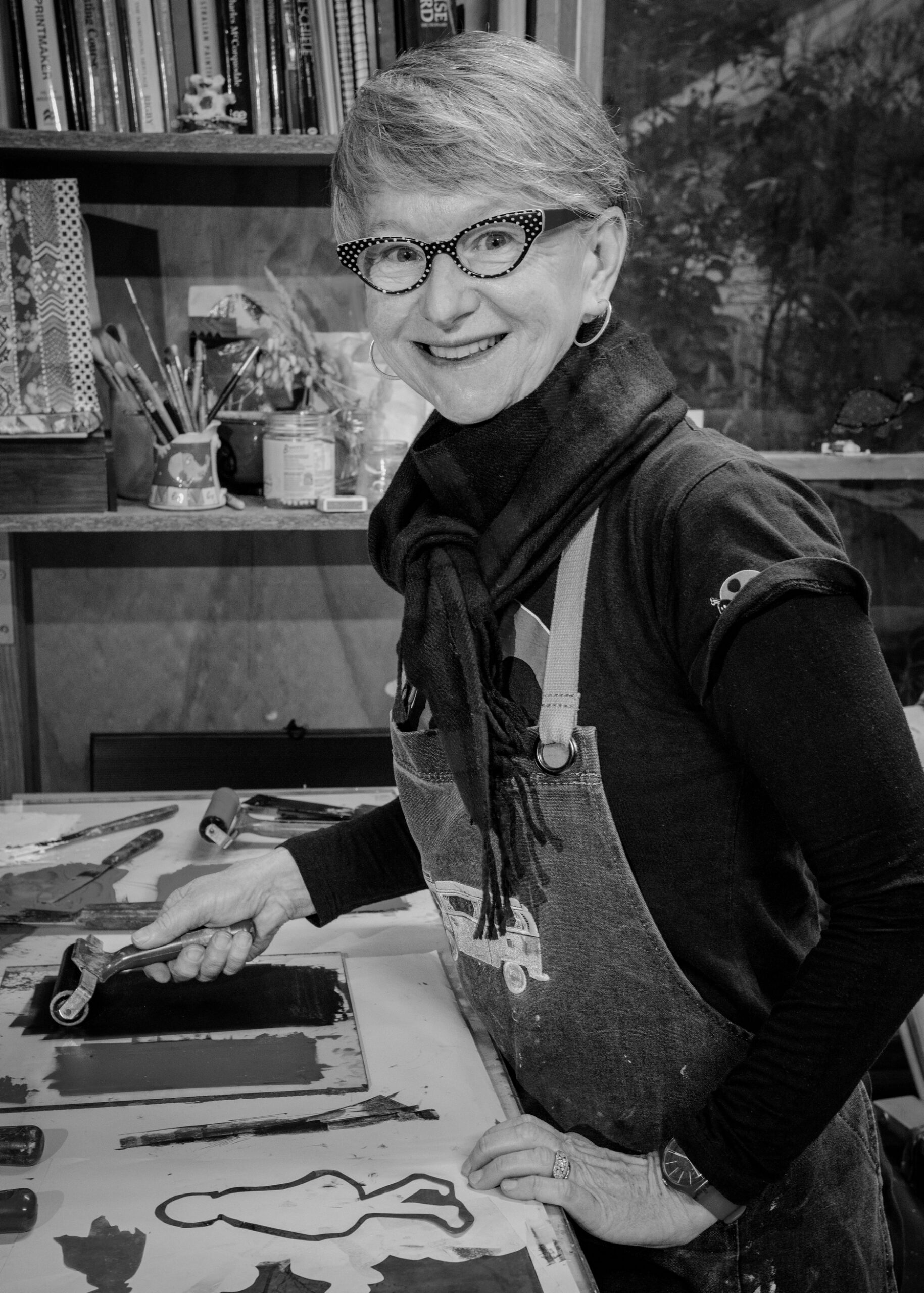
Helen Kocis Edwards, Human Nature 2, double-sided monoprint, collage and giclee prints, 17 x 45 x 45 cm
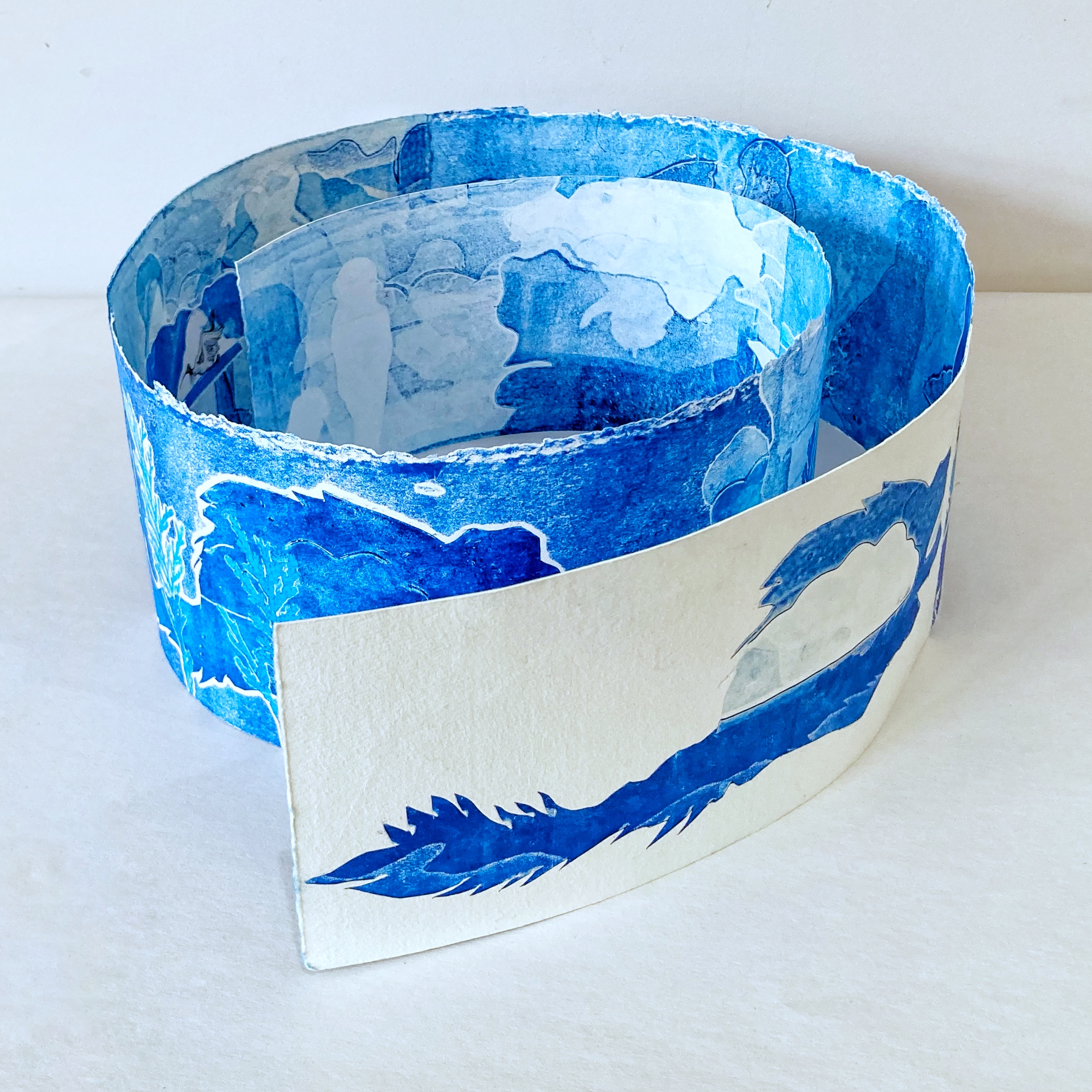
Helen Kocis Edwards, Shape Shifting 2, 2023, monoprint using stencils and leaves, 30 x 40 cm
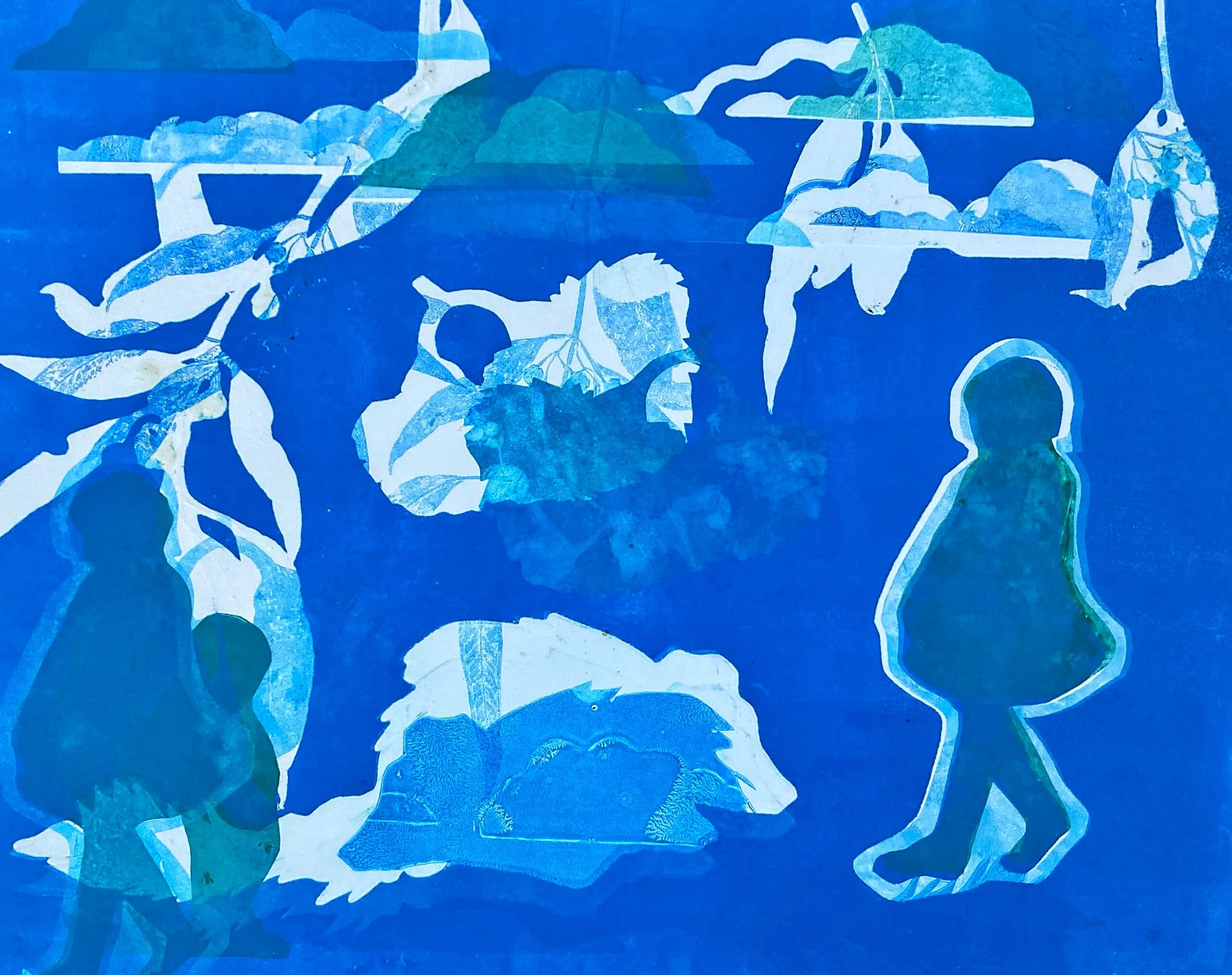
Helen Kocis Edwards considers Protean as having the ability and versatility to transform from one form to another, through the lens of human[1]nature relationships and entanglements.
Humans, animals, plants and natural environments anthropomorphised with anthropoid traits have a long history in folklore, fairytales and literature. Some are deliberately frightening, used to warn children of real or imagined dangers to protect them. The wolf in Red Riding Hood, the forest in Hansel and Gretel create a sense of threat. Emotions can also be expressed through shape shifting creatures like the Babadook.
Treebeard in The Lord of the Rings symbolizes goodness while Baba Yaga is ambiguous representing both witch and mother. Others are benign like Bluey to engage and educate children.
Through monoprints using native and introduced leaf species, cutout stencils of humans, animals, clouds, and flowers an abstract narrative is explored. The printing process uses the impressions of each element to be moved around, to interact with the previous and following print creating a dialogue between the works. Scale, placement, texture and the use of a limited blue/green palette allow the characteristics of the pieces and their relationships to evolve. Imagery reminiscent of characters in story books and fairy tales explores the notion of Protean via these complex and symbiotic connections within physical and emotional landscapes.
How would you articulate your personal fascination or relationship with transformation, particularly as an artist?
Transformation and evolution are an essential part of my practice. Studies and experience have been mostly in drawing, printmaking and painting. Through collaborations and the use of digital technology the work has extended into animation and large-scale projections for arts festivals. The works on paper have moved from 2D to 3D to explore the possibilities paper as a substance offers. Drawings using traditional materials have extended to digital programs and apps providing versatility for mark making, recording and mixing media.
Each body of work relates to previous collections in that it is produced by the same artist but is discreet, the mediums and themes varying according to the requirements of a particular exhibition or an artistic direction followed. Elements of experimentation, trial, error and refinement are included in the processes providing a way forward that builds on the past but has surprising and often challenging aspects.
This keeps me interested and fuels enthusiasm for art making.
Do you believe all transformation is positive as an artist? Do you ever fear or feel stagnation? Is it permissible or even valuable to be comfortable with what some might consider a “plateau”? Artist Andrew Wyeth has a quote that, essentially, conveys that most artists often seek new inspiration, are hungry for it, but he finds he can go back, time and time again, and there is always something new within the old.
Continuing to develop one’s artistic voice seems to require transformation and progression. However, I agree with Andrew Wyeth in that this often includes revisiting previous work to find fresh pathways. Sometimes a past work will surface and start to offer new possibilities.
Often I will place the work somewhere in the studio so that it is there in the corner of my eye hinting at something new.
C A R O L Y N C R A I G
Carolyn Craig, Remediation / My Mother’s Pain, pain charcoal dust print in four parts, 80 x 110 cm
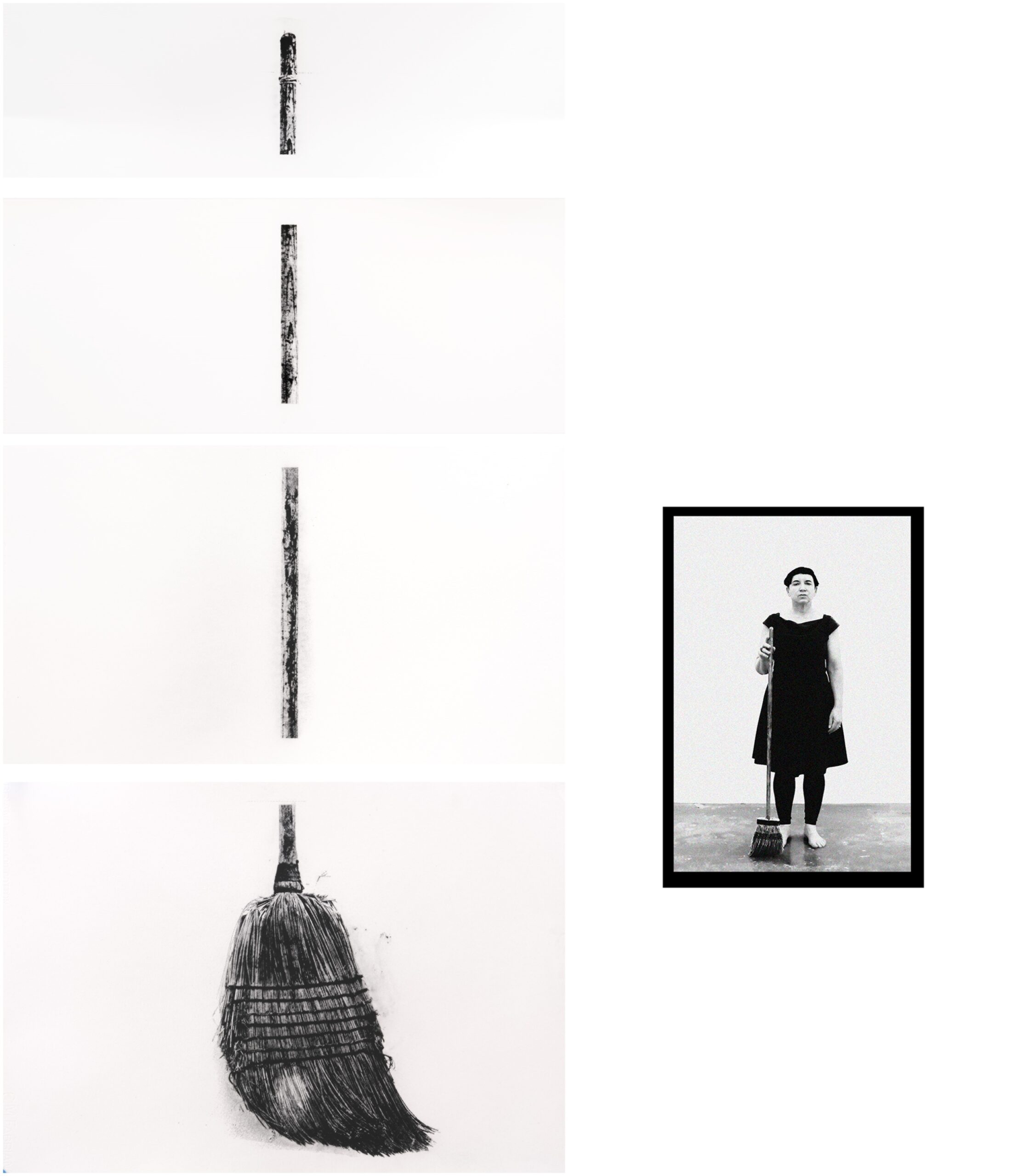
My work attempts to generate counter practices through image making. By this my intention is to operationally subvert standard forms of representation and the politics embedded in visual constructions.
My work uses fundamental ideas of mediation and transfer as part of this process – where the material nature of printmaking as copy can infect and distribute my counter dialogues and also where the use of unstable and porous print processes can open up slippages of self and other through the abject.
I work across and through boundaries. I reject traditionalist gate keeping and seek to erode the edges of craftivism while preserving the beauty of our material knowledge.
Inertia rules my life and my fear of its infection drives my intellectual and material labour. But then I realise I am falling into capitalism’s deep desire. Innovation can sometimes be a deception to drive consumption. Somewhere in that dilemma I make work.
A T H E N A L I M M A L A M A S
Athena Lim Malamas, Arriving, Returning, 2023, mixed media: linocut, ink, enamel, 70 x 100 cm
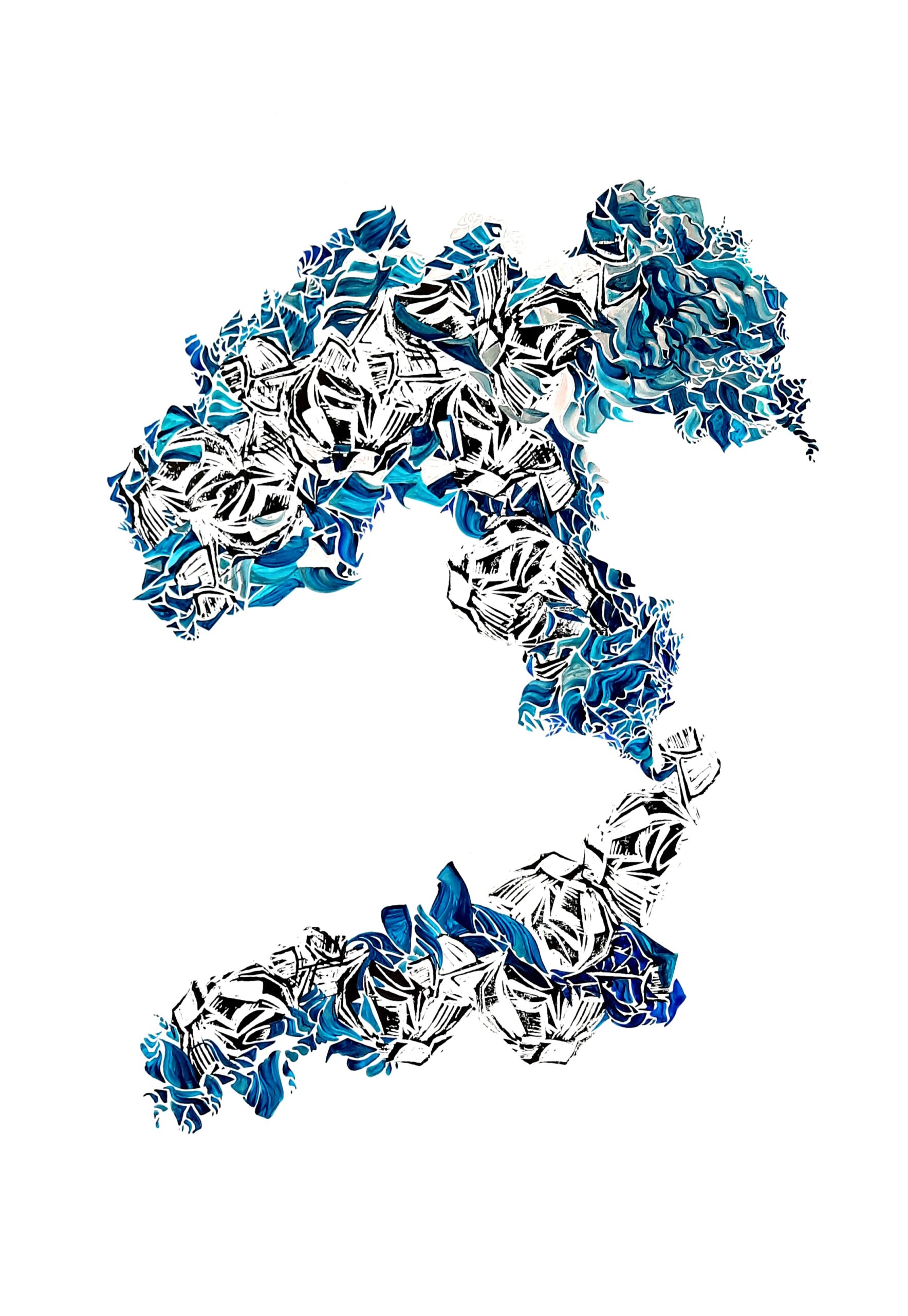
Without challenge there is often no impetus for evolution. How does your practice investigate novel methodolgy?
I carve individual linoleum blocks and use them as a fractal unit of sorts by printing them in different configurations to create more complex images. It is somewhat of a trademark of mine. One way I feel this process differs from more conventional printmaking is that it uses the printing stage as more of an exploratory plain. Traditionally, a printmaker will have an intent, a vision or an image and they will carve that into their respective mediums. The printing process itself is seen as more of a means to an end – to produce that vision onto paper.
Do you believe all transformation is positive as an artist? Do you ever fear or feel stagnation? Is it permissible or even valuable to be comfortable with what some might consider a “plateau”? Artist Andrew Wyeth has a quote that, essentially, conveys that most artists often seek new inspiration, are hungry for it, but he finds he can go back, time and time again, and there is always something new within the old.
Wyeth’s poetic view certainly resonates with me. I never tire of returning to past sources of inspiration. That being said, I cannot deny the hunger, both as an artist and as a human being, to continue to grow, to investigate, to transform. There is deep fulfillment found there that cannot be quenched or met by even the most beautiful of other human joys.
And so I do carry a belief, a steadfast determinism of sorts, that if one day I feel I can no longer explore or evolve as an artist then my journey has come to an end. I hope that day does not come until the day I die.
